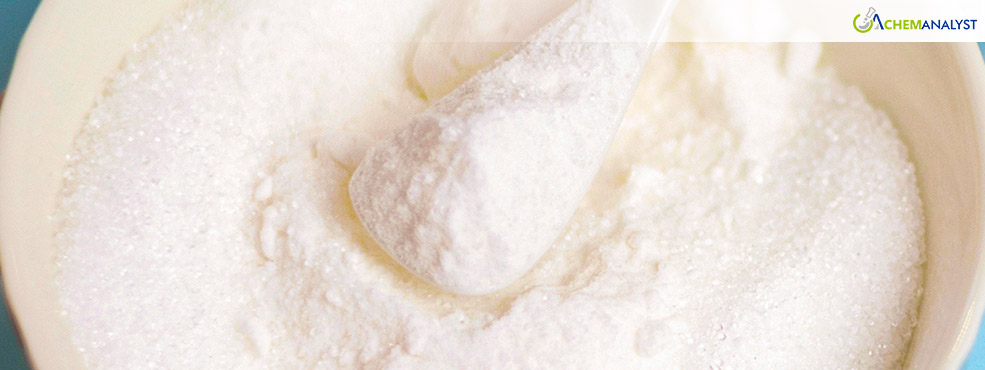Welcome To ChemAnalyst

Bisphenol A (BPA) is vital for producing plastics and resins used across industries. Understanding and optimizing its production is crucial for improving efficiency, reducing emissions, and meeting sustainability and large-scale manufacturing demands.
I. Introduction
Bisphenol A (BPA) is a critical industrial chemical primarily used in the manufacture of polycarbonate plastics and epoxy resins, which are essential in automotive parts, electrical equipment, water bottles, and food can linings. With increasing demand across sectors like construction and electronics, understanding the BPA production process is vital. It not only affects production economics but also plays a key role in determining energy use, emission profiles, and scalability for large-volume manufacturing. In the context of growing sustainability concerns, optimizing BPA synthesis can significantly impact both operational efficiency and environmental compliance.
II. Overview of the Production Process
BPA is typically produced through a condensation reaction between phenol and acetone, in the presence of an acid catalyst—most commonly hydrochloric acid or a sulfonated resin. The process can be conducted in batch or continuous mode, with the latter being favored for industrial-scale operations due to higher consistency and productivity. The core transformation involves a two-step electrophilic substitution mechanism, where acetone reacts with two moles of phenol to form BPA.
Post-reaction, the product mixture undergoes neutralization, separation, and purification using distillation or crystallization. The typical yield ranges between 85–95%, and by-products include water and trace amounts of isomeric bisphenols or unreacted phenol, which can be recovered and recycled within the system.
BPA Value Chain: The BPA supply chain begins with crude oil refining to obtain benzene and propylene, which are converted into cumene. Through the cumene process, phenol and acetone are produced—key raw materials for BPA. BPA is then synthesized via condensation, purified, and distributed to downstream industries for use in polycarbonate plastics, epoxy resins etc. Efficient integration, catalyst recovery, and trade flows play a vital role in ensuring competitive and sustainable BPA supply globally.
III. Raw Materials and Input Requirements
The key raw materials for BPA production are:
• Phenol (C6H5OH): Generally sourced from cumene oxidation; purity >99.9%
• Acetone (CH3COCH3): Derived from propylene or cumene co-production; purity >99.5%
• Catalysts: Often hydrochloric acid or cation exchange resins (Amberlite-type), which ensure high selectivity and efficiency
• High-purity inputs are crucial to avoid side reactions and ensure product clarity, especially for optical-grade polycarbonate applications. The raw material availability is linked closely to refining and petrochemical infrastructure, especially in integrated sites across Asia, the U.S., and Europe.
IV. Major Production Routes
The most common industrial route for BPA is the acid-catalyzed condensation of phenol with acetone. This method is energy-efficient, scalable, and widely used in continuous processes.
Alternative routes such as solvent-assisted methods (e.g., using toluene) are less common due to added complexity and environmental concerns. While there are no viable commercial routes via direct oxidation or catalytic cracking for BPA, recent studies are exploring bio-based phenol and green acetone sources as feedstock alternatives.
Regionally, countries like China and South Korea favor continuous fixed-bed reactors with resin catalysts, while European producers often employ slurry-phase batch processes with enhanced waste recovery systems. Although a fully circular BPA route doesn't yet exist at scale, R&D is exploring bio-aromatic precursors and closed-loop recovery of by-products.
V. Equipment and Technology Used
BPA production typically involves:
• Fixed bed or stirred tank reactors for the condensation step.
• Separation units like vacuum distillation columns or crystallizers for product recovery.
• Neutralization and filtration systems to remove catalyst residues.
Advanced control systems, such as DCS (Distributed Control Systems), monitor critical parameters like temperature, pH, and reaction kinetics.
Recent technological advances include:
• Ion-exchange resin catalysts with extended lifespans.
• Energy integration systems to recover heat from exothermic reactions.
• Inline analyzers for real-time purity checks and tighter process control.
VI. Environmental and Safety Considerations
The BPA production process involves toxic chemicals and requires strict safety measures:
• Volatile Organic Compound (VOC) emissions primarily arise from acetone and residual phenol; these are typically managed via scrubbers and condensation units.
• Wastewater from neutralization steps contains phenolic residues and must undergo biological or chemical treatment before discharge.
• Recycling of unreacted phenol and reuse of catalysts help minimize waste.
Globally, regulations like the EU’s REACH, U.S. EPA TSCA, and China’s MEE standards require environmental impact assessments, workplace exposure controls, and end-use restrictions for BPA. Notably, the EU’s 2024 ban on BPA in food contact materials and the U.S. FDA’s restrictions on its use in infant products reflect growing international scrutiny around BPA’s health risks. These frameworks are pushing producers to adopt cleaner processes and invest in low-toxicity alternatives for specific applications.
VII. Conclusion and Future Innovations
As sustainability pressures mount, R&D efforts in BPA production are shifting toward renewable feedstocks, reduced-emission catalysts, and modular production units for localized manufacturing. Innovations in bio-phenol, CO2-derived acetone, and non-toxic catalyst systems offer a promising route to greener BPA manufacturing.
While the conventional phenol–acetone route will likely remain dominant in the near term due to cost efficiency and scale, the industry is clearly moving toward more environmentally responsible production methods—balancing performance, profitability, and public health concerns.
We use cookies to deliver the best possible experience on our website. To learn more, visit our Privacy Policy. By continuing to use this site or by closing this box, you consent to our use of cookies. More info.
